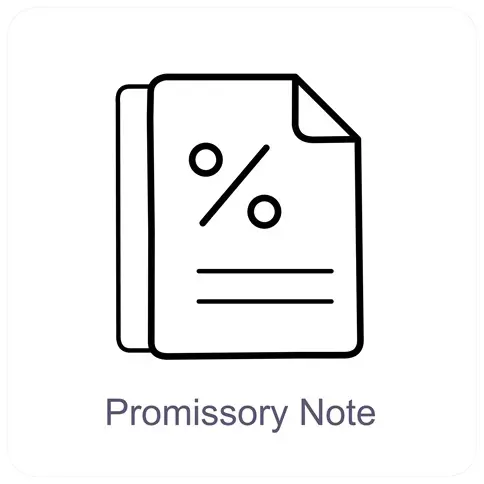Self-Directed IRA (SDIRAs) provide investors with an exciting opportunity to break free from the limitations of traditional publicly traded assets. With access to around $40 trillion in U.S. retirement savings, investors can use their IRAs or 401(k)s to tap into non-traditional asset classes and diversify outside the stock market. One popular alternative is note investing—where your IRA becomes the lender, generating income through loans.
However, investing in fractional notes—a partial ownership in a loan—can pose unique challenges that investors need to navigate carefully. This article explores how to overcome those challenges and maximize your retirement strategy through fractional note investing.
How Does Note Investing with a Self-Directed IRA Work?
When using your Self-Directed IRA to invest in notes, your IRA essentially plays the role of a bank, lending money to borrowers in exchange for interest income. Your IRA can invest in:
– Secured notes (backed by collateral such as real estate)
– Unsecured notes (no collateral backing)
– Performing note (loans being paid on time)
– Non-performing notes (delinquent or defaulted loans purchased at a discount)
These investments can produce passive income and diversify your retirement portfolio beyond stocks and mutual funds. But what happens if your IRA doesn’t have enough funds to buy a note outright, or if you want to partner with other investors?
The Appeal of Fractional Note Investing
Fractional note investing allows your IRA to purchase a partial interest in a loan, making it possible to invest with a limited amount of capital. This strategy provides several benefits:
– Lower capital commitment: You don’t need to cover the entire loan amount.
– Diversification: Fractional ownership allows you to spread your funds across multiple notes, reducing risk.
– Collaborative investing: You can co-invest with other individuals or entities, including other IRAs or personal funds.
However, partnering on fractional notes introduces additional complexities—especially around documentation, titling, and compliance with IRS rules governing Self-Directed IRAs.
Overcoming the Challenges of Fractional Note Investing
- Accurate Documentation and Pro-Rata Interest
To maintain compliance, your IRA’s interest in the fractional note must be properly documented. Whether your IRA is issuing the loan or purchasing an interest in an existing note, there needs to be:
– A purchase agreement between the note seller and your IRA.
– Clear titling showing that your IRA owns a specific percentage (pro-rata interest) in the note.
When dealing with fractional ownership, all legal documents must reflect the IRA’s involvement. For example, if the loan is being serviced by a third-party company, it must distribute payments pro-rata to each investor, including your IRA.
- Proper Titling of the Note
It is essential to title the note correctly to avoid triggering a prohibited transaction under IRS rules. For example, the note should be titled to the benefit of the IRA, such as:
– Client First Name Last Name>, legal owner via non-trust custodial IRA with AET
This ensures that the IRA is recognized as the legal owner and that any payments or distributions are made directly to the IRA.
- Hiring a Third-Party Servicer or Collection Agency
Your IRA cannot personally handle management tasks, such as chasing down delinquent payments. If you hold a non-performing note, your IRA must hire a debt-collection agency or note servicer to manage the collection process. This is critical because handling these tasks yourself could lead to prohibited transactions that jeopardize the tax-deferred status of your IRA.
Key Considerations for Fractional Note Investments
– All note-related expenses (e.g., servicer fees, legal fees) must be paid directly from your IRA. Using personal funds to cover these expenses can result in a prohibited transaction.
– All income generated by the note must be deposited directly into the IRA, not your personal bank account.
– Partnering with others: You can co-invest with other IRAs, personal funds, or even other investors, but each party’s ownership percentage must be clearly documented to avoid IRS scrutiny.
How to Get Started with Fractional Note Investing in an IRA
Getting started with note investing using your Self-Directed IRA is straightforward:
- Open a Self-Directed IRA account with a provider like uDirect IRA Services.
- Fund your account via contributions, rollovers, or transfers.
- Select your investment: Identify the note you want to invest in—either as a new loan or by purchasing a partial interest in an existing loan.
Once your IRA owns the fractional note, you’ll need to ensure that all income and expenses flow through the account to remain compliant with IRS regulations. Using a third-party servicer simplifies this process by handling payments, collections, and record-keeping.
Is Fractional Note Investing Right for You?
Fractional note investing offers a compelling way to diversify your retirement savings and generate passive income. However, it requires careful planning and attention to detail. Ensuring that documents are correctly titled and that the investment is managed according to IRS rules is essential to avoid costly mistakes.
If you’re interested in learning more about how Self-Directed IRAs can open doors to fractional note investing, contact us at uDirect IRA Services at info@uDirectIRA.com. We’ll help you navigate the process so you can take control of your financial future and unlock the full potential of your retirement savings.
With the right guidance and a solid plan in place, fractional notes can be a powerful tool for building long-term wealth through your Self-Directed IRA. Start small, invest smart, and watch your portfolio grow.

